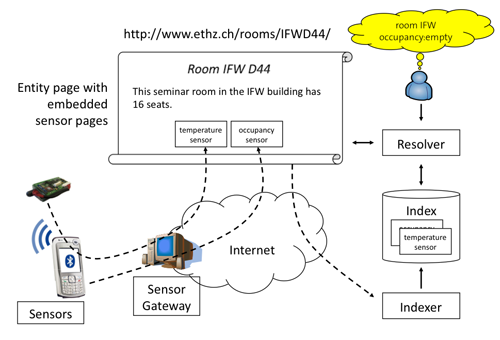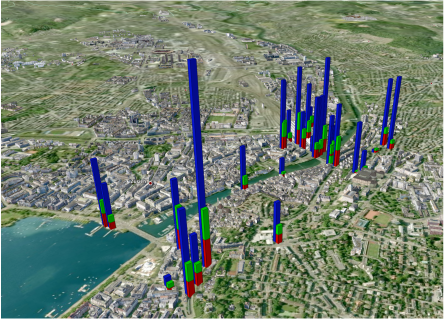|
Searching the Real World with Mobile PhonesA Research Project in Cooperation with the Distributed Systems Group
The current trend of connecting more and more sensors to the Internet enables novel applications and services to be created. In collaboration with NTT DoCoMo Euro-Labs, we investigated one such novel service, a real-time search engine enabling the search for entities of the real world (i.e., people, places and things) that exhibit a given state at the time of the query - that state being captured with sensors. For example, one may use the search engine to find restaurants which are currently well-attended but quiet. The expected scale and dynamics of the sensor data renders conventional indexing approaches useless and therefore requires novel solutions to be applied. During the course of this project, we developed a novel approach called sensor ranking, which enables scalable search for entities with a highly dynamic state. Based on this approach, we developed a Web-based architecture for our search engine called Dyser. The basic concept is that sensors and entities are represented by sensor pages and entity pages on the Web, which include not only an informal textual description but also structured data, like the current state of a sensor. For example, one could use Dyser to search for lawns in parks which have currently only few people on it by entering park lawn people:few. Each lawn would be represented by an entity page and associated to one or more sensor pages – in this case, a sensor page of a sensor which measures the density of people.
Within the scope of this project, we also investigated to what extent the built-in Bluetooth modules of modern mobile phones can be used to sense the dynamics of people at public places. For this, we developed a mobile phone-based Bluetooth scanner, which continuously records visible Bluetooth devices nearby and also performs data analysis on the fly. Using data gathered from Bluetooth inquiries, it is possible to determine the level of hecticness at a public place, for example. The following picture shows the results of several Bluetooth-based measurements throughout the inner city of Zurich. The height of the blue bars represents the average number of Bluetooth devices at that particular location, the combined height of the red and green bars indicates the level of hecticness.
See also the following related items:
Selected PublicationsSee the Publications of the Distributed Systems Group page for a full listing of our publications.
Related Student ProjectsThe following table lists corresponding student projects in our group. Note that some descriptions will be in German.
|
||||||||||||||||||||
|
|


